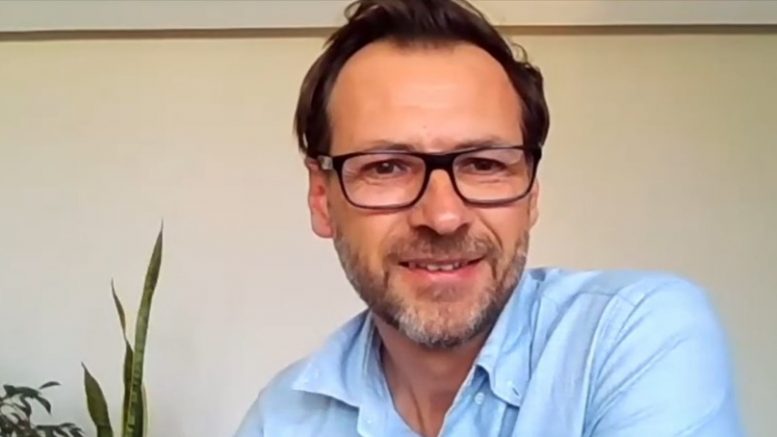From heading towards a more “diversified and less concentrated” supply chain of critical metals to the need for skilled people in the global mining industry, World Bank mining specialist Martin Lokanc believes that the world needs to take a number of crucial steps to successfully transition away from fossil fuels and meet its net-zero goals.
Speaking at The Northern Miner’s first Global Mining Symposium of the year, Lokanc said the supply of critical minerals needed for energy transition are “more concentrated” when compared to the fossil fuel economy since the likes of coal and oil are quite widespread across the world.
For example, he noted that half of the world’s copper, nickel, cobalt, lithium and rare earths — all of which are required to make batteries for electric vehicles — are concentrated in about three countries, at a time when the world needs to produce about two times the amount of copper that it has mined in the last 10,000 years to meet its climate goals.
“I’m not concerned at all about geological availability, I think there’s enough resources. The question for me (is) can we produce them at a sufficient quantity and in time, and I’m not sure how all that’s going to play out,” said Lokanc. “But we need to find the resources. And that’s something for governments, the World Bank and the private sector to work on together.”
Prices of critical metals have drastically increased in the last two years, as the world looks to meet its decarbonization goals.
One way to strengthen the supply chain is to invest more in exploration for metals, said Lokanc, especially outside of the few regions that enjoy the lion’s share of spending.
In terms of absolute dollars, Canada was the most explored country in the world in 2021, followed by Australia, the United States and China, but countries like South Africa attracted just 0.76% of the total exploration dollars, said the mining specialist. The Democratic Republic of Congo (DRC) got 1.2% and Saudi Arabia 0.75%.
“Africa, the Middle East, Central and South Asia… has 33% of the global landmass… but attract less than 10% of global exploration,” said Lokanc. One of the reasons behind that is that the geological mapping in some of these countries is “often dated,” as they use older technologies.
Countries might also face a shortage in skilled workers as the world looks to extract more metals. “When you think about that amount of copper that needs to be mined in the next 25 years, two times what we’ve mined in the past, where are the people going to come from to build and operate these mines in a responsible way?” Lokanc asked.
Responsible mining
The responsible way includes keeping in check greenhouse gas emissions, which analysts expect to vastly increase in the coming years as the demand for metals increases.
BMO, in a report published in January, assessed six lithium-producing companies in its coverage and said emission levels from lithium producers would rise in the coming years as the companies keep adding to their lithium capacity.
The report projects about 60% of lithium capacity additions this decade to stem from spodumene conversion, which it says produces higher emissions when compared to brine-based operations.
Ending emissions will be crucial to limit global warming and to ensure the world meets the goals of the 2015 Paris Accord, in which nearly 200 nations agreed to keep global temperatures within 2° Celsius above preindustrial times. The global mining industry is responsible for 4-7% of greenhouse-gas emissions globally, according to McKinsey.
Lokanc said that it’s important for mining companies to realize that consumers will “want clean products” and that companies are already ensuring their supply chain remains clean through contracts “that they wouldn’t normally have done before.” “So, there’s a natural business case there,” he said.
The human rights issue in the supply chain is another aspect that needs to be resolved, says Lokanc. For example, the DRC mines 60% of the world’s cobalt, 20% of which is produced through artisanal or small-scale mining, where children are often found onsite.
“If a mother needs to go to work with her husband at the mining site, there’s no daycare facilities and the child could accompany them… it’s not an easy thing to resolve at all.” He added that the World Bank is looking at incentive schemes and subsidies to encourage families to send their children to school.
With all eyes on Russia’s ongoing invasion of Ukraine, Lokanc feels that geopolitical issues in the mining world will increasingly play an important role, “as we all seek for the same kind of limited resource base.”


Be the first to comment on "GMS: Invest in exploration and skilled labour to tackle critical metals supply chain, says World Bank mining expert"